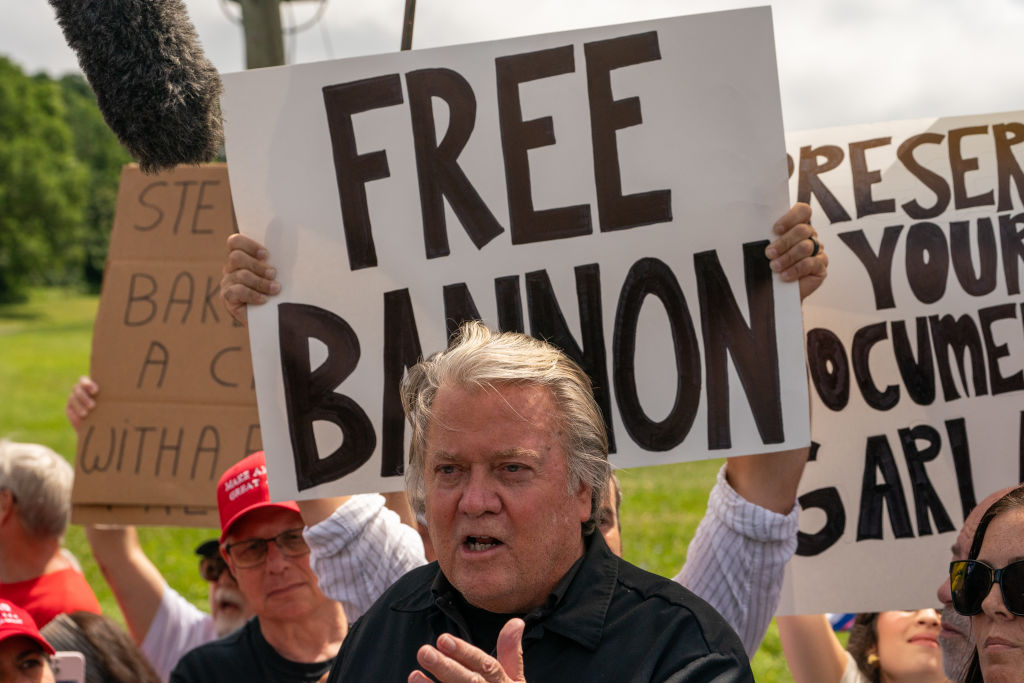Why opposing immigration is not about 'whiteness'
If the Ku Klux Klan’s continued existence in the United States is unsettling, its emergence in Ireland is almost surreal. Yet here we are in a time when reality is much stranger than fiction.Frank L. Silva, a former KKK member, has been actively collaborating with anti-establishment groups in Ireland, sparking media outrage and widespread head-scratching. Silva’s history shows how the Klan has evolved from its post-Civil War roots to modern offshoots. The dark irony here is impossible to overlook.Irish immigrants were depicted in political cartoons as brutish, animalistic figures, often described as 'negroes turned inside out.'You see, the Klan’s ties to Irish identity and the very concept of “whiteness” go way back.The fighting IrishThe 19th century saw waves of Irish immigrants fleeing the Great Famine only to find themselves vilified upon arrival in America. The Ku Klux Klan, with its roots deeply entwined with anti-Catholic sentiment, exploited this wave of Irish immigration to fuel fear and division. Irish Catholics were portrayed as a threat to Protestant values and, by extension, to the American people.If there’s one thing the Irish love — beside drinking, dancing, cursing, joking, and singing — it’s a good fight. Recognizing the threat, they met it head-on, fists raised.One striking example of Irish defiance was the Notre Dame student uprising of 1924. When a Klan rally was held near their campus, Irish Catholic students stood their ground, showing strength in the face of real danger."But weren’t the Irish 'white'?" some of today's crusading anti-racists may ask. "Wasn’t the Klan all about preserving and promoting “white supremacy”? This is where a little history lesson is in order. White privilege?In 19th-century America, Irish immigrants were not considered “white” in the same sense as Anglo-Saxon Protestants. They were perceived as racially inferior due to a mix of religious, cultural, and economic biases. Arriving destitute and in droves, Irish immigrants were seen as competition for low-wage jobs in rapidly urbanizing cities. Their willingness to work for less fueled native workers' resentment and economic anxiety — sound familiar?Religious tension deepened these divisions. In a country founded on Protestant ideals, Irish Catholics were viewed as agents of the Vatican, a foreign power. This suspicion, stoked by groups such as the Know-Nothing Party, painted Irish Catholics as potential saboteurs of American democracy — loyal not to the United States but to Rome. The notion that the Irish could undermine governance gained traction in certain circles, giving weight to the Klan’s anti-Irish campaigns. The animosity, while harsh, had roots in primal instincts — tribalism. A group of newcomers with strange accents and unfamiliar customs seemed wholly different. From an evolutionary standpoint, the suspicion made complete sense. Welcoming a complete stranger into your home with open arms is, at best, unwise. At worst, it can be disastrous.However, the backlash against the Irish was extreme and largely detached from reality. Cultural narratives and pseudoscientific theories added fuel to the fire. Irish immigrants were depicted in political cartoons as brutish, animalistic figures, often described as “negroes turned inside out.” This comparison underscored their perceived moral and intellectual inferiority, supporting the belief that they threatened societal stability. Books like "Comparative Physiognomy" perpetuated these stereotypes, further entrenching the racialization of the Irish and positioning them below the dominant white Protestant identity.Franklin’s foresightEarlier this year, the brilliant Steve Sailer revisited Benjamin Franklin’s essay “Observations Concerning the Increase of Mankind,” a polemic opposing the influx of German immigrants into Pennsylvania. Franklin worried that these newcomers would resist assimilation into English-speaking society, potentially reshaping the colony with their own customs and language rather than blending in and strengthening a unified culture. Less melting pot, more splintered silos. Franklin’s fear was entirely reasonable. Shared skin color was no assurance of shared values or a cohesive society. The threat, as he saw it, was not merely foreign influence but the fracturing of what he considered the cultural fabric of early America.This notion holds a striking parallel to modern debates. The idea that “white privilege” is a uniform experience ignores the varied and often tumultuous paths of European-descended populations. The Irish’s suffering during the Great Famine, the persecution of Eastern European Jews, or the challenges faced by Southern and Eastern European immigrants all challenge the monolithic narrative of privilege. The only thread connecting these people was their shared hope for a better life. That’s it. They faced prejudice, economic struggle, and cultural exclusion. “Whiteness” has never been, and will never be, a simple, unified identity.


If the Ku Klux Klan’s continued existence in the United States is unsettling, its emergence in Ireland is almost surreal. Yet here we are in a time when reality is much stranger than fiction.
Frank L. Silva, a former KKK member, has been actively collaborating with anti-establishment groups in Ireland, sparking media outrage and widespread head-scratching. Silva’s history shows how the Klan has evolved from its post-Civil War roots to modern offshoots. The dark irony here is impossible to overlook.
Irish immigrants were depicted in political cartoons as brutish, animalistic figures, often described as 'negroes turned inside out.'
You see, the Klan’s ties to Irish identity and the very concept of “whiteness” go way back.
The fighting Irish
The 19th century saw waves of Irish immigrants fleeing the Great Famine only to find themselves vilified upon arrival in America. The Ku Klux Klan, with its roots deeply entwined with anti-Catholic sentiment, exploited this wave of Irish immigration to fuel fear and division. Irish Catholics were portrayed as a threat to Protestant values and, by extension, to the American people.
If there’s one thing the Irish love — beside drinking, dancing, cursing, joking, and singing — it’s a good fight. Recognizing the threat, they met it head-on, fists raised.
One striking example of Irish defiance was the Notre Dame student uprising of 1924. When a Klan rally was held near their campus, Irish Catholic students stood their ground, showing strength in the face of real danger.
"But weren’t the Irish 'white'?" some of today's crusading anti-racists may ask. "Wasn’t the Klan all about preserving and promoting “white supremacy”?
This is where a little history lesson is in order.
White privilege?
In 19th-century America, Irish immigrants were not considered “white” in the same sense as Anglo-Saxon Protestants. They were perceived as racially inferior due to a mix of religious, cultural, and economic biases.
Arriving destitute and in droves, Irish immigrants were seen as competition for low-wage jobs in rapidly urbanizing cities. Their willingness to work for less fueled native workers' resentment and economic anxiety — sound familiar?
Religious tension deepened these divisions. In a country founded on Protestant ideals, Irish Catholics were viewed as agents of the Vatican, a foreign power. This suspicion, stoked by groups such as the Know-Nothing Party, painted Irish Catholics as potential saboteurs of American democracy — loyal not to the United States but to Rome. The notion that the Irish could undermine governance gained traction in certain circles, giving weight to the Klan’s anti-Irish campaigns.
The animosity, while harsh, had roots in primal instincts — tribalism. A group of newcomers with strange accents and unfamiliar customs seemed wholly different. From an evolutionary standpoint, the suspicion made complete sense. Welcoming a complete stranger into your home with open arms is, at best, unwise. At worst, it can be disastrous.
However, the backlash against the Irish was extreme and largely detached from reality. Cultural narratives and pseudoscientific theories added fuel to the fire. Irish immigrants were depicted in political cartoons as brutish, animalistic figures, often described as “negroes turned inside out.”
This comparison underscored their perceived moral and intellectual inferiority, supporting the belief that they threatened societal stability. Books like "Comparative Physiognomy" perpetuated these stereotypes, further entrenching the racialization of the Irish and positioning them below the dominant white Protestant identity.
Franklin’s foresight
Earlier this year, the brilliant Steve Sailer revisited Benjamin Franklin’s essay “Observations Concerning the Increase of Mankind,” a polemic opposing the influx of German immigrants into Pennsylvania. Franklin worried that these newcomers would resist assimilation into English-speaking society, potentially reshaping the colony with their own customs and language rather than blending in and strengthening a unified culture. Less melting pot, more splintered silos.
Franklin’s fear was entirely reasonable. Shared skin color was no assurance of shared values or a cohesive society. The threat, as he saw it, was not merely foreign influence but the fracturing of what he considered the cultural fabric of early America.
This notion holds a striking parallel to modern debates. The idea that “white privilege” is a uniform experience ignores the varied and often tumultuous paths of European-descended populations. The Irish’s suffering during the Great Famine, the persecution of Eastern European Jews, or the challenges faced by Southern and Eastern European immigrants all challenge the monolithic narrative of privilege.
The only thread connecting these people was their shared hope for a better life. That’s it. They faced prejudice, economic struggle, and cultural exclusion. “Whiteness” has never been, and will never be, a simple, unified identity. True racism lies in denying this reality.
Franklin’s fears resonate in today’s world. The genuine celebration of diversity — a blend of backgrounds and traditions — has been warped by ideologies that prioritize superficial traits over shared cultural values.
Not that long ago, before the hyper-progressive mind virus took hold, we sought to respect differences while finding stable common ground.
Now, it’s about men in skirts, pronouns, and 700 different genders.
Degeneracy has taken the place of diversity.
EU-inspired erosion
The assumption that shared skin color equates to cultural uniformity is as flawed now as it was in Franklin’s era. This brings us to the larger consequence of global immigration and cultural dilution.
Once unique, robust cultures such as those in Germany and Ireland are now grappling with the consequences of globalization’s unchecked march. Mass immigration, driven by open-border policies and economic interests, has accelerated cultural erosion at an alarming rate.
The very essence of these nations’ identities is being submerged under the weight of Brussels-bred conformity. Franklin’s warning about cultural displacement, voiced over two centuries ago, feels prophetic today. The results of unfettered globalization can be seen in the loss of distinct identities and the rise of tensions that hark back to the very divisions that defined the Irish struggle in America.
The question is, how much will be lost before nations recognize the cost?
The re-election of Donald Trump offers the United States a glimmer of hope. But in Europe, hope is in short supply. In fact, one could argue it vanished years ago.
Originally Published at Daily Wire, World Net Daily, or The Blaze
What's Your Reaction?

































































































